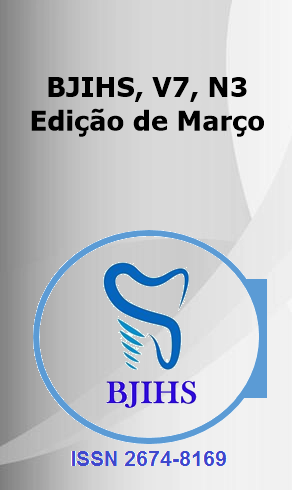Abstract
Photopolymerization is a fundamental process in restorative dentistry, directly influencing the mechanical strength of composite resins. The efficient conversion of monomers into polymers impacts the durability, adhesion and stability of the restorative material. Factors such as light intensity, exposure time and the type of photopolymerizer determine the effectiveness of polymerization and the final quality of the resin. It is known that inadequate photopolymerization can result in material brittleness, increased polymerization shrinkage and clinical failures. Therefore, understanding the effects of this technique is essential to optimize clinical results and ensure durable restorations. Objective: This study aims to evaluate the effects of the photopolymerization technique on the mechanical strength of composite resins. Methodology: A literature review was carried out in scientific databases, including clinical and experimental studies published in the last twenty-three years. Results: The results of the analysis demonstrate that the photopolymerization technique significantly influences the mechanical strength of composite resins; its correct application increases the degree of monomeric conversion, improving the hardness and durability of the material. The use of LED photopolymerizers showed greater efficiency compared to halogens, ensuring better polymerization. Thus, well-established protocols are essential to optimize the performance of restorations. Conclusion: It is concluded that the photopolymerization technique plays a crucial role in the mechanical strength of composite resins, directly impacting their durability and clinical performance. The adoption of adequate parameters, such as exposure time and light intensity, is essential to ensure efficient polymerization. Therefore, the use of evidence-based protocols and advanced technologies is essential for the longevity and success of dental restorations.
References
AMARAL, C. M. (2003). Influência das técnicas de polimerização das resinas compostas na microinfiltração, microdureza, formação de fendas e resistência à microtração (Tese de doutorado). Universidade Estadual de Campinas, Campinas.
BISPO, L. B. (2010). Resina composta nanoparticulada: há superioridade no seu emprego? Revista Dentística, 9(19), 21-24.
KLEVERLAAN CJ & FEILZER AJ. Polymerization shrinkage and contraction stress of dental resin composites. Dental Materials, 21, 12, 1150–57,2005.
SILVA, J. M. F., ROCHA, D. M., KIMPARA, E. T., & UEMURA, E. S. (2008). Resinas compostas: estágio atual e perspectivas. Revista Odonto, 16(32), 98-104.
SILVA, V. E., ARAÚJO, A. P., & FRANCIOSCONI, S. A. P. (2002). Adaptação marginal e durezade resinas compostas. Influencia de métodos de fotoativação: avaliação da adaptação com moldes de elastômeros. Revista da Faculdade de Odontologia de Bauru, 10(1), 7-16.
SOARES, CARLOS JOSÉ et al. Polymerization Shrinkage Stresses in a Premolar Restored with Different Composite Resins and Different Incremental Techniques. The Journal Of Adhesive Dentistry, 15, 4, 341-350, 2013.
SOUZA, R. O. A., MICHIDA, S. M. A., ZOGHEIB, L. V., LOMBARDO, G. H. L., PEREIRA, P. C., BARCA, D. C., & PAVANELLI, C. A. (2010). Avaliação da dureza Vickers de resinas compostas de uso direto e indireto. Brazilian Dental Science, 12(1), 23-30.

This work is licensed under a Creative Commons Attribution 4.0 International License.
Copyright (c) 2025 Ana Beatriz Lima Pinheiro, Carlos Eduardo Cardoso Silva, Iasmin Nacer de Oliveira Machado, Heloisa Alves Pereira, Eliana Batista Dresch, Igor Júnior Batista de Lima, Paulo Renê Faria de Almeida Oliveira, Taina Mamede Santana Mendes, Daciane da Silva Ingá, Larisa Milena Fernandes da Silva
